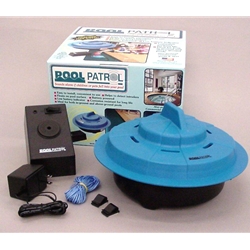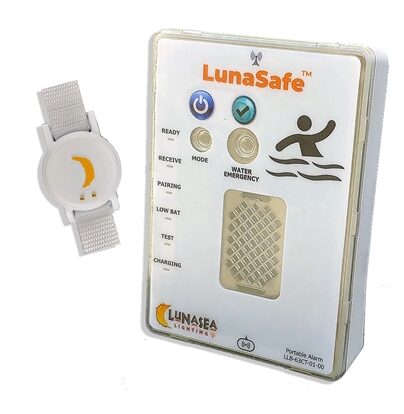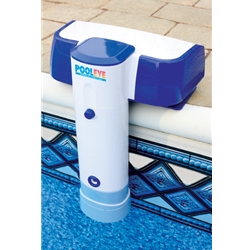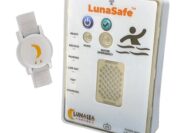One of the most important accessories you can buy for your inground pool is a pool alarm. Besides adult supervision, a pool alarm is one of the best ways to protect small children, non-swimmers and pets from accidentally drowning. There are many models of inground pool alarms on the market today with different detection systems and alarming capabilities. This shopping guide walks you through the selection process for choosing an inground pool alarm and explains the features to look for when comparing models.
Type and Size of Pool?
The first consideration in choosing a pool alarm is the type of pool you have. To avoid operational or installation issues, choose a pool alarm designed specifically for inground pools or an alarm that works in both inground and above-ground pools.
Next, measure the size of your pool. Pool alarms have upper limits to the size of pool that they can safely monitor. For example, the Pool Eye PE23 alarm is rated for inground pools up to 20′ x 40′.
What Kind of Detection System?
There are a variety of detection technologies used in pool alarms to determine if a person or pet has fallen into the water: surface wave detection; subsurface detection; immersion detector wristband; and infrared perimeter detection.
The most advanced (and effective) pool alarms use a combination of technologies. This improves the alarm’s ability to sense when a person or pet is in the water and to also minimize false alarms caused by wind or falling objects.
GOOD
Surface Wave Detection
This type of pool alarm floats on the water’s surface. When a child or pet falls into the pool, the waves created by the fall trigger the alarm.
- Advantages: Easy setup (requires no installation). Sensitive to low weights (about 8 lbs.), making these alarms especially good for protecting small pets.
- Disadvantages: Can be prone to false alarms caused by wind, heavy rain or falling leaves, branches and objects. Must be removed during swimming.
- Example: Pool Patrol PA-30
BETTER
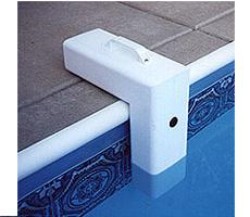 Subsurface Detection
Subsurface Detection
This type of pool alarms detects movement below the surface of the water using sensors that are activated by wave-induced pressure changes.
- Advantages: More consistent in alarming and less likely to false alarm than surface wave detection alarms. Adjustable sensitivity. Some models do not have to be removed during swimming and can be used with a solar cover.
- Disadvantages: Some models require installation onto the side of the pool. May not be good for protecting small pets under 15 lbs.
- Example: Poolguard PGRM-2.
Immersion Detector Wristband
This type of pool alarm activates when a person or pet wearing a special wristband or pet collar falls into the water, triggering a remote alarm.
- Advantages: Provides continuous protection to the wearer. Alarms immediately. No setup or installation. The entire system is portable and can be taken on vacation or used on a boat. Works in all sizes of pools.
- Disadvantages: Can false alarm if the wristband becomes wet from normal activities like washing hands or walking in the rain. Does not protect children or pets who are not wearing special wristbands or collars.
- Example: LunaSafe Child/Pet Pool Alarm.
BEST
Surface & Subsurface Detection
These pool alarms use advanced technologies to read waves above and below the water’s surface.
- Advantages: Uses a sophisticated program to analyze the disturbance and alarms in appropriate circumstances. Effective in avoiding false alarms. Does not have to be removed during swimming.
- Disadvantages: May not be good for protecting small pets under 15 lbs.
- Example: PoolEye PE23.
How Loud is the Alarm?
All inground pool alarms sound an extra loud siren or horn when triggered, usually ranging from 85 dB to 120 dB at 0′ from the base unit. Test the loudness of your pool alarm by activating the siren and walking away from it and into the house. You want a pool alarm that you can hear when you are inside your home.
NOTE: Most pool alarms will siren until manually disarmed and/or turn off automatically after a set amount of time (3 minutes is typical), so it is critical that you be able to hear and respond quickly to an alert.
Other Key Features
Tamperproof — If you have small children, look for an inground pool alarm that makes it difficult for children to operate. Some pool alarms require a magnetic key to deactivate the alarm, such as the PoolEye PE-23.
Connect to Security System Some inground pool alarm systems, including the Pool Patrol PA-30, can be connected to your home’s security system so you and your security company will receive emergency alerts.
Installation Before purchasing, make sure that the installation requirements for the inground pool alarm you selected is compatible with the layout and construction of your pool area and pool deck. If you can’t or don’t want a permanent installation, consider a LunaSafe Immersion Pool Alarm system that requires no drilling or wiring and is completely portable.
Summary
Pool alarms are an important part of your overall pool safety plan which should also include other layers of protection such as a pool fence and pool door/gate alarm. For more information and specs for the latest inground pool alarms, go to the Inground Pool Alarm Comparison Chart.


